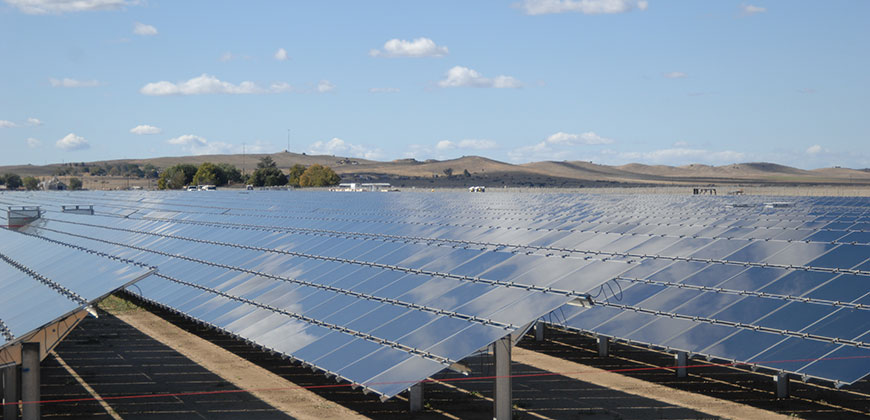
Colorado State University researchers James Sites in the Department of Physics and W.S. Sampath in the Department of Mechanical Engineering have received a $900,000, four-year award from the U.S. Department of Energy’s SunShot Initiative to develop a new way to increase the efficiency of thin-film cadmium telluride (CdTe) solar cells. Their “Device Architecture for Next Generation CdTe PV” project will build on a number of advances made at CSU and elsewhere to increase the voltage of these cells without compromising performance in other areas.
The key features of their proposed architecture include a thinner CdTe absorber that will remain fully depleted of carriers under all operating conditions. It will also contain a highly transparent buffer layer tuned to an optimal conduction-band offset and an expansion of the CdTe band gap at the back of the cell to reflect electrons away from the back contact, among other innovations.
Improving a proven technology
CdTe is the photovoltaic material used by the largest U.S. solar panel manufacturing company, First Solar, Inc., which partners with CSU on several of its solar cell research projects. The company has produced enough solar panels to create more than 15 gigawatts of power, almost enough to supply the entire electrical needs for the state of Colorado. In some cases, the power produced has a selling price of less than 4 cents per kilowatt hour, making it highly competitive with fossil fuel sources.
Professors Sites and Sampath, of the College of Natural Sciences and the College of Engineering, respectively, have worked closely together on CdTe solar cell research for many years. Their program is particularly strong because it combines the cell fabrication facilities in Sampath’s lab with the measurement and analysis capabilities in Sites’ lab. Apart from the First Solar company, their work has achieved the highest efficiency to date for CdTe solar cells. The award from the DOE will allow them to continue to push the boundaries of solar cell efficiency.
SunShot Initiative
The DOE’s decade-long SunShot Initiative works with universities, companies, and local governments in an effort to find ways to reduce the cost of solar energy production. Its goal is to make solar energy competitively priced by 2020.